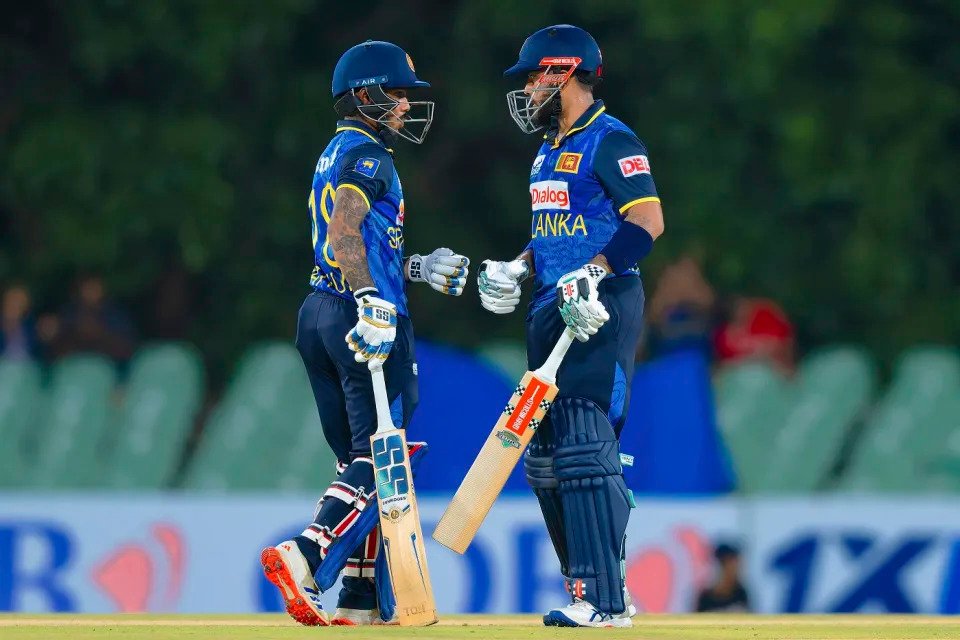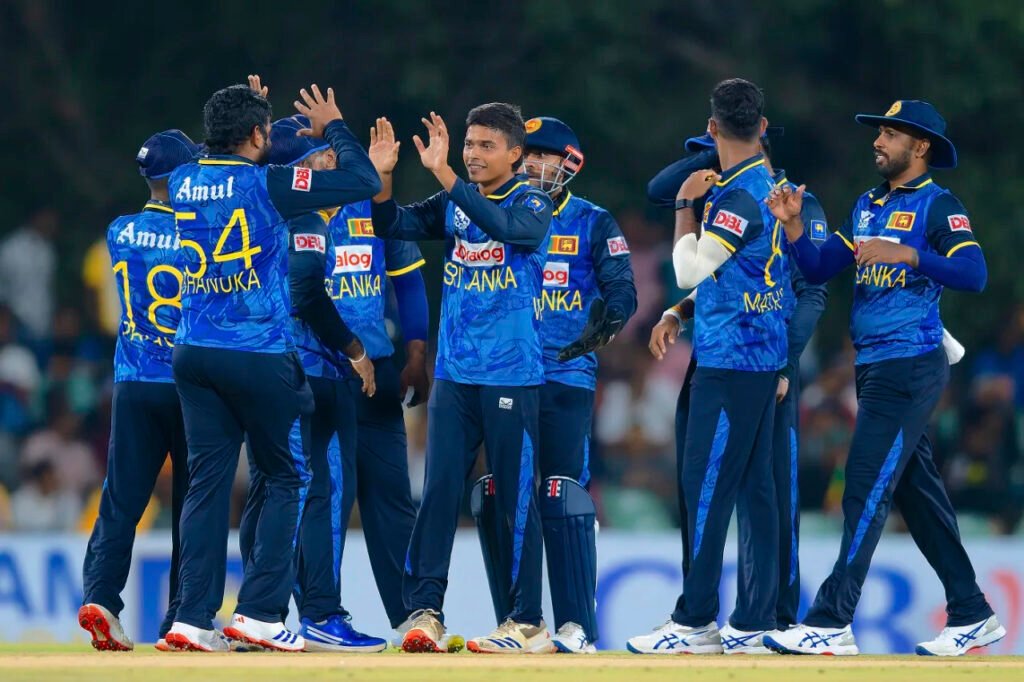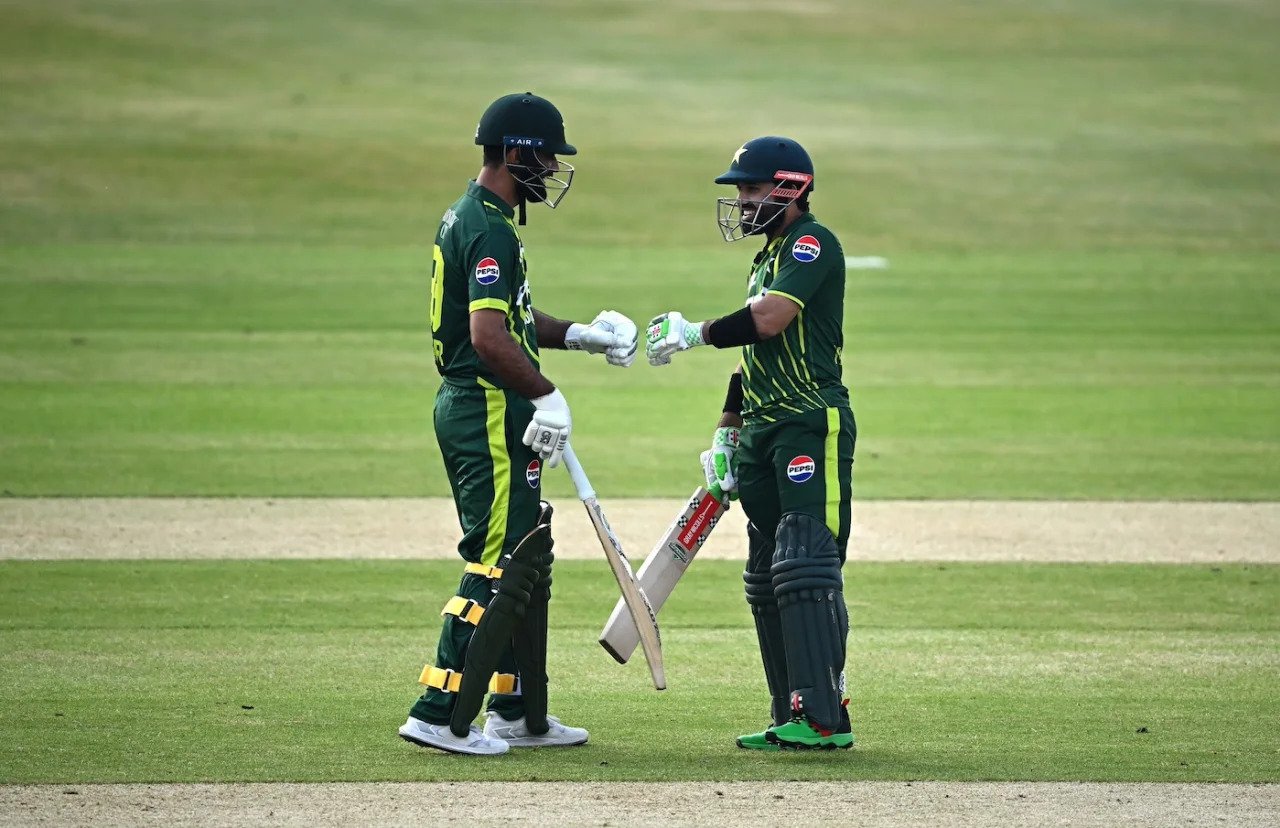Sri Lanka’s spinners put on a commanding display to tie the T20I series against the West Indies at 73 runs in the second match played in Dambulla.
The debutants Dunith Wellalage and Charith Asalanka were instrumental in destroying the West Indies’ 163-run chase, limiting them to an only 89 runs.

Key Performances and Match Results
Sri Lanka 162 for 5 (Nissanka 54, Kusal Mendis 26, Shepherd 2-23) beat West Indies 89 (Powell 20, Wellalage 3-9, Asalanka 2-6, Theekshana 2-7) by 73 runs.
Match Analysis
The best bowler was rookie Dunith Wellalage, who was making his T20I debut after a delay. He finished with figures of 3 for 9, while Maheesh Theekshana, Wanindu Hasaranga, and Charith Asalanka each claimed two wickets. Throughout the innings, Matheesha Pathirana was the only seamer to claim a wicket.
After winning the toss and choosing to bat first, Sri Lanka performed a good job of maintaining a consistent run rate throughout their innings, thanks in part to Pathum Nissanka’s 54 off 49 at the bat. Although Kusal Mendis, Kamindu Mendis, and Kusal Perera all scored runs in this game, Sri Lanka’s spinners were the real stars of the West Indian chase.
In the eleventh over of the chase, Hasaranga, the top spinner in Sri Lanka, delivered his first ball of the match. Perhaps the least noteworthy thing about that delivery was that he managed to get a wicket.
Even more astonishing was that the West Indies had collapsed to 39 for 6 despite his being Sri Lanka’s sixth bowler. But with the legendary off-spin stylings of, uh, Charith Asalanka, who needs Hasaranga? Yes, the Sri Lankan captain chose to introduce himself and a right-arm version of Kamindu Mendis ahead of Hasaranga with two left-hand hitters at the crease.
It also proved to be effective. Even at that point in the game, Asalanka’s two overs produced two wickets for just six runs, and those weren’t the best numbers. No, that honor went to Wellalage, who had taken three for himself despite being by no means a newcomer to the international scene.
Asalanka had said before the match that he had hoped for more from the spinners in the first Twenty20 International, and that hope was realized in spades in the second. Even if Gudakesh Motie had turned the ball square in the opening over, the West Indies would still have been unprepared for Theekshana’s sharp-turning offbreak of 100 km/h.
The West Indies hitters executed their strategies flawlessly and outplayed Sri Lanka’s bowlers in the first Twenty20 International. Moving in the crease, utilizing the depth, and stepping out made everything look good, with the final over-finish not nearly as good as it appeared.
However, Sri Lanka learned from their mistakes and returned stronger, primarily because they had anticipated the challenges this surface would present and had Wellalage in place of pace-bowling all-rounder Chamindu Wickramasinghe.
But West Indies only had two spinners in their lineup, as if they had missed the memo. And those two, Roston Chase and Motie, did their bit, combining for just 37 off eight overs. Fabian Allen getting a shot in the championship game won’t come as a surprise.
The West Indies batsmen then appeared clueless about how to handle Sri Lanka’s variety of spin threats, deftly manipulating the circumstances in addition to deft changes in pace, line, and length. If the West Indies are to be a threat in Thursday’s showdown, they will have to make arrangements quickly.

On the surface, Nissanka’s innings appeared to be more harmful than anything else, and it was easy to see why by the norms of contemporary T20 cricket. In addition to 27 dot balls, this innings saw 42 runs come in boundaries (nine fours and one six).
They played out 58 dots, so it was really a microcosm of Sri Lanka’s innings overall. This meant that in five of the opening 10 overs, there were fewer than five runs scored, and in one Shamar Joseph over, Nissanka amassed over half of their powerplay total of 52 runs through a combination of aggressive play and good fortune.
Nissanka and company, however, appeared to have other intentions if that over was intended to announce the beginning of Sri Lanka’s assault. After achieving eight runs in the first three overs, Sri Lanka’s run rate was at a solid 8.66 by the end of the powerplay, but it was the most it would reach during their innings. it over insured that the first three overs were swiftly in the rearview mirror.
Nissanka used the remainder of his time at the crease using strange boundaries to break up intervals of dot deliveries. However, he was able to do this consistently because of the time he stayed at the bat, which helped Sri Lanka’s scoring rate remain above seven runs per over.
In T20s, anchors are generally regarded as being out of date, but on a wicket like this one, Nissanka, who won Player of the Match, proved to be vital, even though it didn’t seem like it at the time, by allowing players like Perera to take early risks. And the middle order and lower order hit out freely with wickets remaining for the last overs. Consequently, in the final 10 overs, Sri Lanka scored 85 runs, only four shy of the West Indies’ final total.





